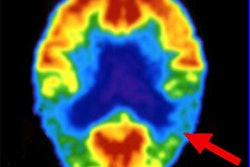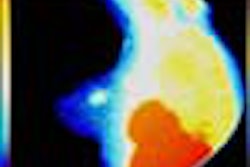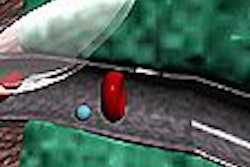ORLANDO - Contrast-enhanced ultrasound is fine-tuning both the detection and subsequent biopsy of prostate cancer, according to a pair of studies presented Tuesday at the American Institute of Ultrasound in Medicine meeting.
Although the studies’ authors concede more research is needed, their work raises the possibility that contrast-enhanced ultrasound may give clinicians a much-needed weapon in fighting this deadly disease. It’s estimated that in 2001, more than 180,000 new cases of prostate cancer will be diagnosed in the U.S. and 32,000 men will die from the disease.
In the first study, a collaborative effort between U.S. and Austrian radiologists, researchers compared contrast-enhanced color Doppler-guided biopsy with conventional gray-scale guided systematic biopsy, the latter of which has been shown to miss clinically significant prostate cancers in 34% of men.
Even with this room for improvement, Dr. Ferdinand Frauscher of Austria’s University Hospital of Innsbruck noted that a contrast-enhanced biopsy procedure will only be considered cost effective if it can both identify at least as many prostate cancers as the systematic technique, and require fewer biopsy cores.
Using both techniques, Frauscher's team biopsied 94 men with a suspicion of cancer. Of the 30 cancers confirmed at surgery, the contrast-enhanced technique detected 29 cancers, while the conventional technique only found 22 cancers.
As for cost savings, Frauscher said the contrast-enhanced technique resulted in a 50% decrease in core specimens and pathologic interpretations, which works out to a cost of about $130 per patient -- $55 less than the systematic technique, he said. In other words, the fewer number of core biopsies offsets the cost of contrast, he said.
In the second study, Dr. Ethan Halpern of Thomas Jefferson University in Philadelphia found that contrast enhancement improves ultrasound’s ability to detect high-grade lesions.
"We wanted to catch tumors in which ‘watch and wait’ isn’t recommended -- the ones that need immediate intervention," he said.
Halpern examined 60 subjects, first with conventional ultrasound, and then with an intravenous infusion of the contrast agent Definity, manufactured by DuPont Pharmaceuticals of North Billerica, MA. Of the cancers found in 20 patients at biopsy, contrast-enhanced ultrasound was more sensitive in detecting the tumors than conventional ultrasound, 65% compared to 38%. In addition, more high-grade lesions were detected during contrast infusion.
Halpern did note, however, that contrast enhancement missed cancers in five patients, all of whom had tumors with a Gleason score of less than six, which prompted him to conclude that the technique may miss lower-grade tumors.
By Dan Krotz
AuntMinnie.com contributing writer
March 14, 2001
Related Reading
MRI provides definitive answers for prostate cancer patients with doubtful US, March 6, 2001
Sonography insufficient to preclude biopsy in suspected prostate cancer, March 1, 2000
Click here to post your comments about this story. Please include the headline of the article in your message.
Copyright © 2001 AuntMinnie.com



















